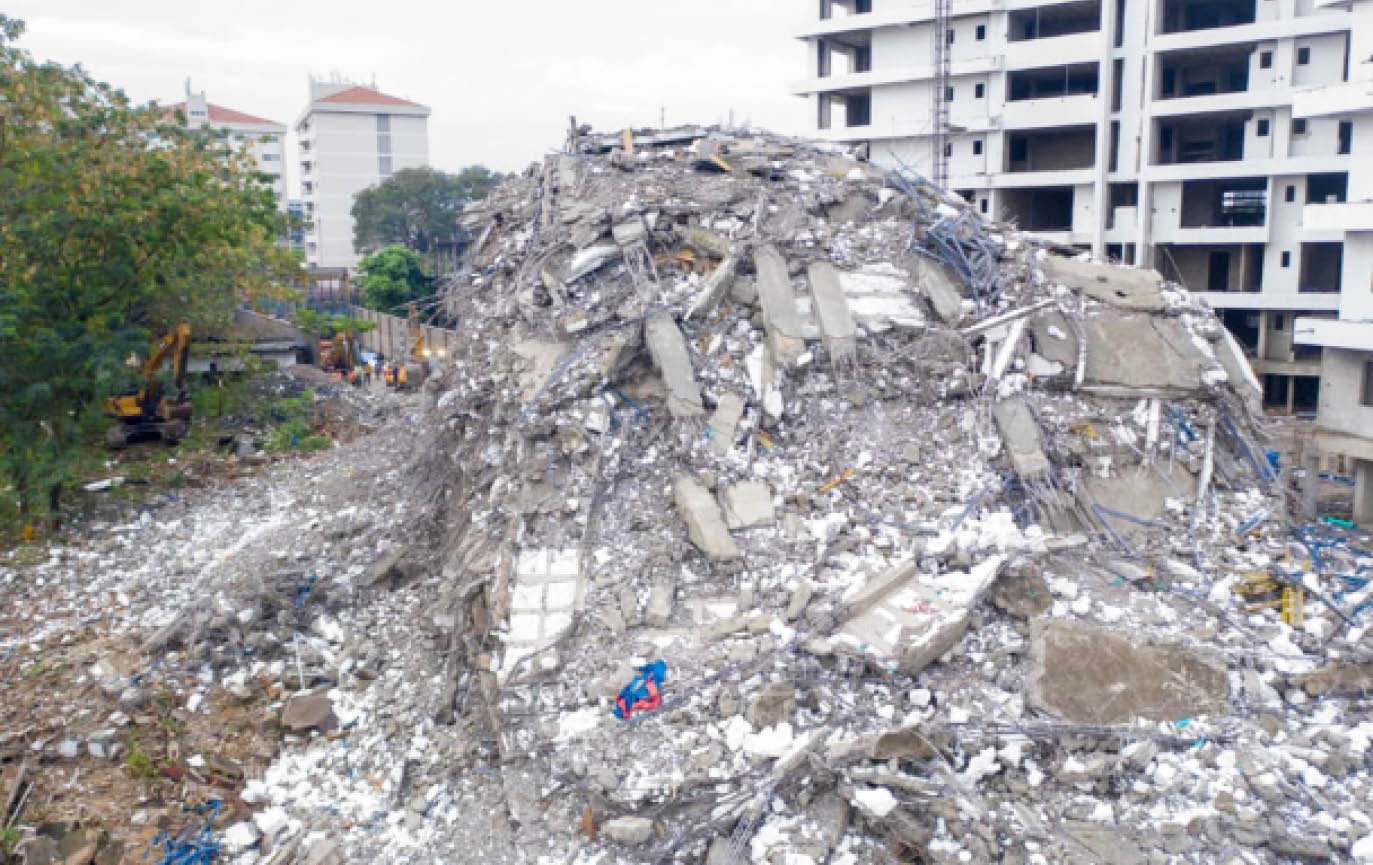Building collapse: Professionalism and the way forward
The recent recurring incidence of building collapse has become a challenge to builders and its frequency is worrisome because in September alone, we had three cases in different parts of Nigeria. In Kubwa, FCT, a three-storey building under construction came down. Record has it that two lives were lost with several persons injured and several […]

Rubbles of the collapsed 21-storey building on Gerrald Road, Ikoyi, Lagos
The recent recurring incidence of building collapse has become a challenge to builders and its frequency is worrisome because in September alone, we had three cases in different parts of Nigeria.
In Kubwa, FCT, a three-storey building under construction came down. Record has it that two lives were lost with several persons injured and several adjoining houses affected.
Before that, we had a building collapse in Lagos, and while we were trying to comprehend all these, another building on Beirut Street in Kano came down. People have come out with different verdicts, and this is from a layman’s background, without knowing the root cause. As professionals, it is not only funny but an embarrassment to the building profession.
In the case of Osborne Road Lagos building collapse where the owner also perished, people said the builders also died. These are issues. In Abuja, we have the Abuja Metropolitan Management Council with the Development Control under it. What are they doing?
In some of these collapsed buildings, you’ll see some columns of say 230 x 230 dimension would have a 2Y16 and 2Y12, or you’ll see a beam with a complete block embedded inside. It’s that bad that columns are being cast without adequate mix ratios, the aggregates are not proportioned appropriately such that what we have much there is the fine aggregate, not coarse aggregate.
So when such things happen, people say it is because of the use of substandard materials, substandard workmanship, substandard professional input or design failure, but who vetted the design? Who approved the setting out, and after the approval of these, who approved the other stages of work? These are the responsibilities of the various development agencies.
If we have people in these places who are not doing their work, they should be called to account. It is not about making spurious allegations; we always say this and that and at the end of the day, government will say it is investigating, and that ends the matter and the cycle continues. We cannot be losing innocent lives to something that is man-made; these are deliberate acts of ignorance, negligence and a function of corruption in the system.
Also, the time is now ripe that every building project nationwide should have a signboard with details of the builder who is in charge of the project, his registration number with the Council of Registered Builders of Nigeria (CORBON) and Nigerian Institute of Building (NIOB). By doing so, red flags can be raised for those lacking these.
Other professionals involved in the project, architects, structural engineers, etc. should all be registered with their relevant professional agencies, because these people could be held accountable, and because when all this information is not provided, people just assume that everything is okay.
Similarly, those who engage all people to work on sites should request for practising licence and registration number with their relevant professional body. It is time to walk the talk; people should be held accountable. We must always remember that the soul of the building is in the hand of the builder.
Omale Peter Ameh is the Chairman, Nigerian Institute of Building (NIOB), FCT Chapter
